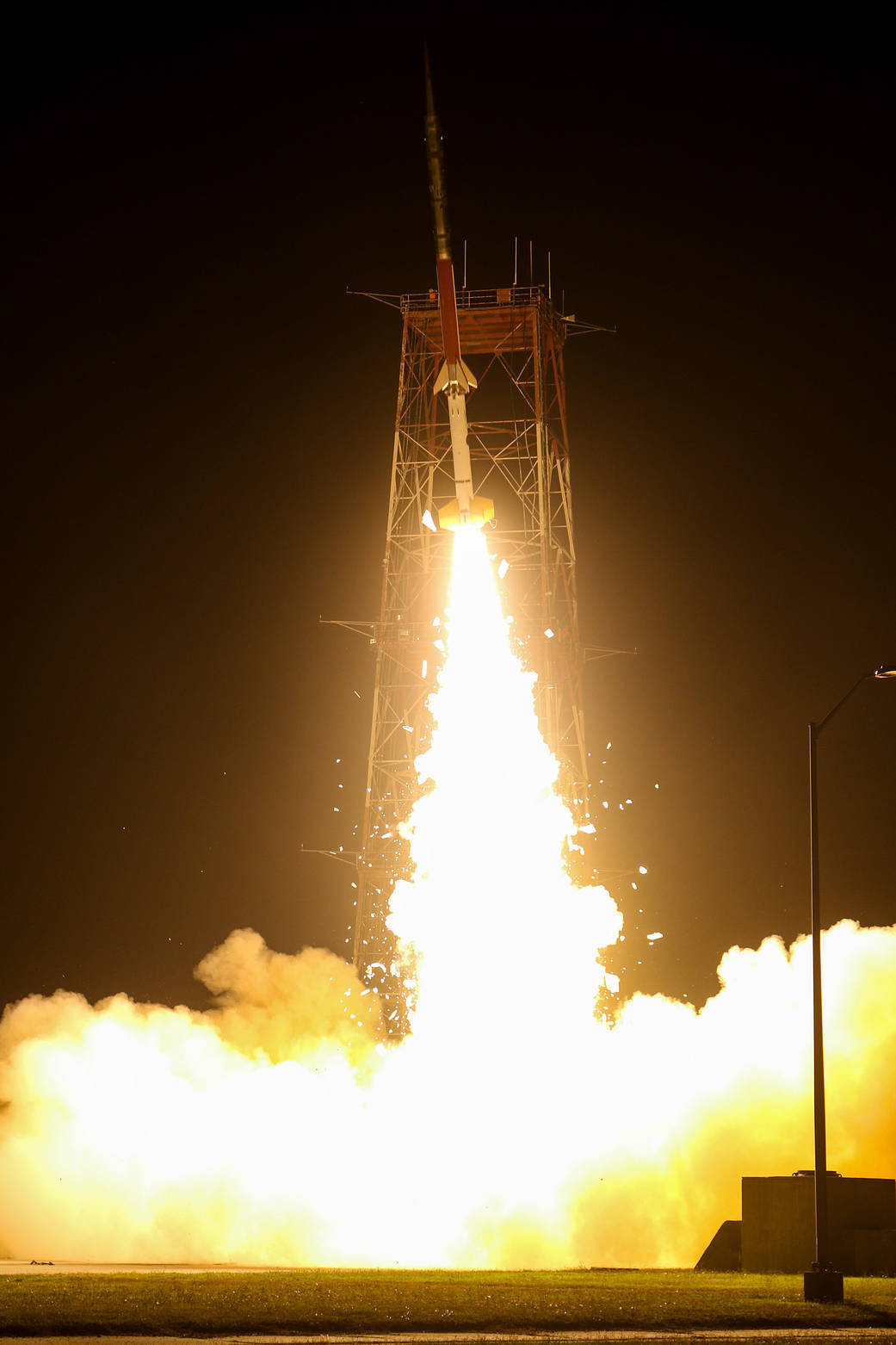A sounding rocket launch testing science instruments for future missions was successfully conducted at 9:16 p.m. EDT, Aug. 23, 2022, from NASA’s Wallops Flight Facility in Virginia.
The Terrier-Improved Malemute carried the Sporadic-E ElectroDynamics Demonstration mission, or SpEED Demon, to an apogee of 100 miles before descending and landing in the Atlantic Ocean. The experiment was not planned to be recovered.
The purpose of the SpEED Demon mission was to test new instrumentation along with heritage instruments that have flown on other sounding rocket missions, but not together.
The SpEED Demon instruments will be further improved based on results from this launch and will subsequently fly on a science mission targeted for summer 2024 from the Kwajalein Atoll in the Marshall Islands and possibly many other sounding rocket opportunities.
“This was an excellent mission. Preliminary analysis shows that we flew through a Sporadic E event on the down leg and the data looks great. We’ll be looking at the performance of all instruments to get us ready for the 2024 launch,” said Aroh Barjatya, SpEED Demon principal investigator and director of the Space and Atmospheric Instrumentation Lab at Embry-Riddle Aeronautical University in Daytona Beach, Florida.
While the main purpose of SpEED Demon was to test the instrument package and risk reduction on some new technologies for usage on subsequent rocket missions, scientists are excited that they were able to launch into a Sporadic E layer in the ionosphere, the electrified upper portion of Earth’s atmosphere that’s made of ionized gas called plasma. Sporadic-E layers on Earth can cause unpredictable disruptions to radio communications.
The next launch from Wallops is targeted for late October 2022.
Image Credit: NASA Wallops/Kyle Hoppes
Keith KoehlerNASA’s Wallops Flight Facility, Wallops Island, Virginia



























